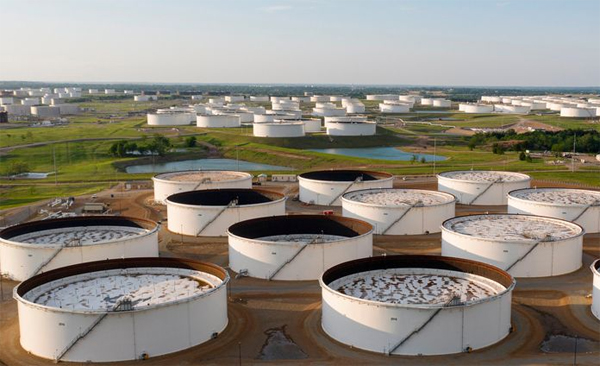
Myra P. Saefong and Williams Watts, MarketWatch
SAN FRANCISCO/NEW YORK
EnergiesNet.com 09 08 2022
Oil futures ended higher on Thursday, a day after a selloff on rising fears of a global economic slowdown pushed prices for the U.S. and global crude benchmarks to their lowest levels since January.
Traders shrugged off pressure from a U.S. government report showing a hefty weekly increase in domestic crude supplies, along with more modest gains in petroleum product inventories.
Price action
- West Texas Intermediate crude for October delivery CL.1, 1.94% CL00, 1.93% CLV22, 1.94% rose $1.60, or nearly 2%, to settle at $83.54 a barrel on the New York Mercantile Exchange after ending Wednesday at $81.94, its lowest finish since Jan. 11.
- November Brent crude BRN00, 1.97% BRNX22, 1.97%, the global benchmark, rose $1.15, or 1.3%, at $89.15 a barrel on ICE Futures Europe.
- Back on Nymex, October gasoline RBV22, 1.54% rose 1.7% to $2.3461 a gallon.
- October heating oil HOV22, 0.47% fell 1.3% to $3.5401 a gallon.
- October natural gas NGV22, 3.18% added 0.9% at $7.915 per million British thermal units.
Market drivers
Official U.S. government data revealed a “massive” weekly build in commericial U.S. crude stockpiles, leading to a “knee-jerk reaction” lower in oil prices, said Tyler Richey, co-editor at Sevens Report Research. However, “the market was quick to stabilize as futures were already near-term oversold following Wednesday’s multi-percentage point drop to multi-month lows.”
Worries over the energy demand outlook had helped drag down crude prices, with U.S. benchmark futures losing 5.7% Wednesday.
“The strength that we have seen in the USD is not helping oil or the broader commodities complex, whilst there are clear demand concerns, particularly when it comes to the continued COVID-related lockdowns that we are seeing across parts of China. Chengdu has seen another extension to its lockdown,” said Warren Patterson, head of commodities strategy at ING, in a note.
The Chinese city of Chengdu on Thursday extended a lockdown for a majority of its 21 million residents, news reports said.
On Wednesday, U.S. benchmark WTI crude had fallen into “a more formidable support zone between $79 and $85,” said Richey.
“While there has been some deterioration in the demand side of the fundamental equation between global economic growth worries and, more specifically, new lockdowns in China, we will continue to look for the market to stabilize in the low $80s, as investors digest the latest fundamental developments,” he said.
Supply data
Gains for oil prices came despite data from the Energy Information Administration Thursday showing an unexpected, across-the-board rise in domestic petroleum inventories.
The government reported that U.S. crude inventories rose by 8.8 million barrels for the week ended Sept. 2. The increase came on the back of a 7.5 million-barrel decline in crude stocks in the Strategic Petroleum Reserve, EIA data showed. The data came out a day later than usual because of Monday’s U.S. Labor Day holiday.
“Weak domestic demand and continued SPR releases moving into refinery turnaround season allow for both strong exports and domestic crude inventory builds,” Troy Vincent, senior market analyst at DTN, told MarketWatch.
On average, analysts expected the EIA to report a decline of 1.8 million barrels in U.S. crude supplies for the week ended Sept. 2, according to a survey conducted by S&P Global Commodity Insights.
The American Petroleum Institute late Wednesday said U.S. crude inventories rose by 3.6 million barrels last week, according to sources and news reports.
The EIA said gasoline stockpiles climbed by 400,000 barrels last week, while distillate stocks edged up by 100,000 barrels. The S&P Global Commodity Insights showed expectations for inventory declines of 1.5 million barrels for gasoline and 1.1 million barrels for distillates.
Crude stocks at the Cushing, Okla., Nymex delivery hub fell by 500,000 barrels for the week, the EIA said.
Separately, the EIA reported Thursday that domestic natural-gas supplies rose by 54 billion cubic feet for the week ended Sept. 2. That was generally in line with an average forecast for an increase of 55 billion cubic feet from analysts polled by S&P Global Commodity Insights.
marketwatch.com 09 08 2022












